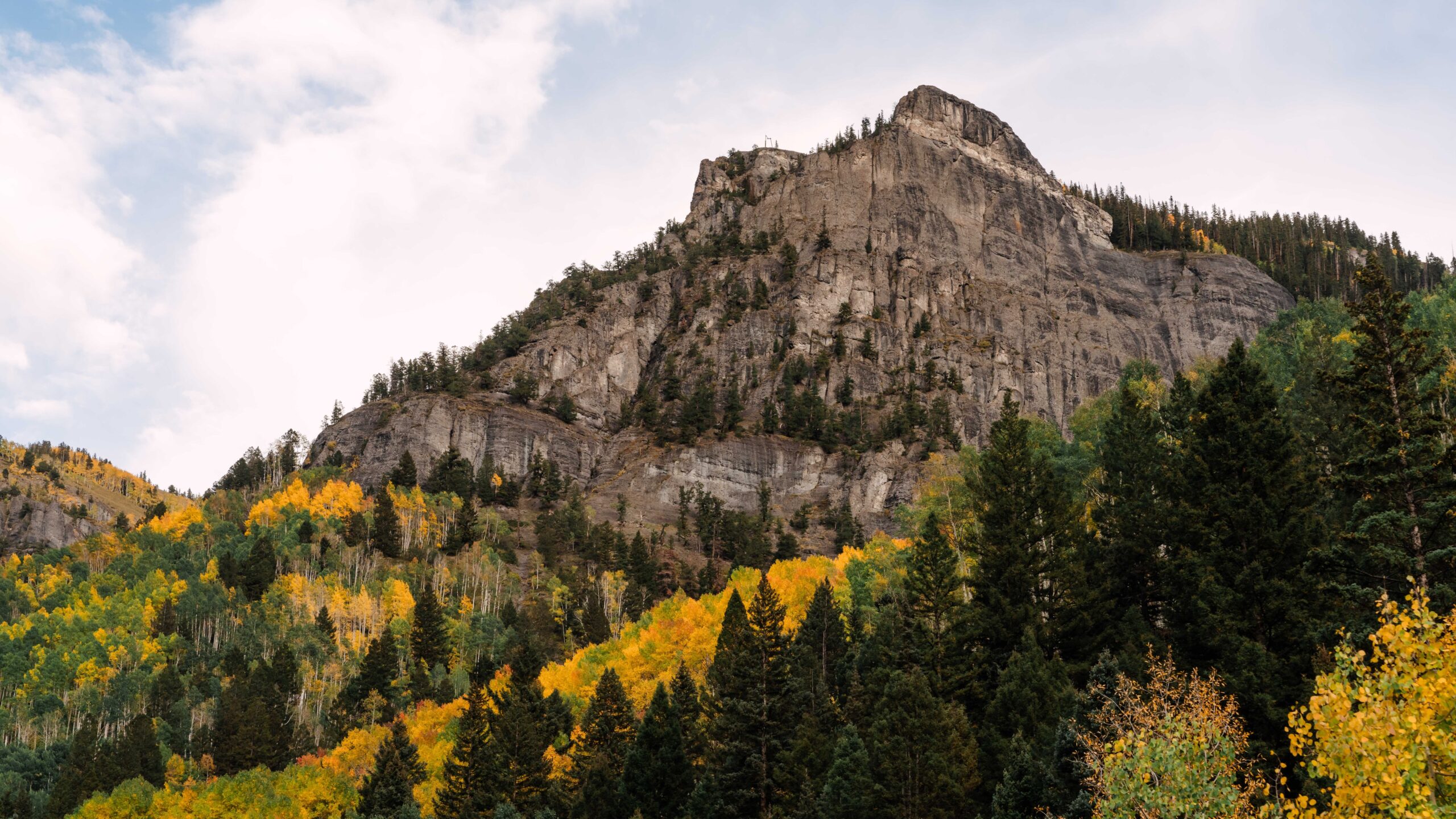
For much of the country (…not Texas) it’s almost sweater-weather season—the time when roads turn into scenic ribbons and trailheads smell like pine and camp coffee! To help you catch peak color (and peak cozy), we put together five leaf-peeping destinations that span the country plus practical pro tips on when to go, how to get there, and where to post up for the night. We also tucked in easy Packit Gourmet road trip meal plan so you can spend less time cooking and more time chasing color.
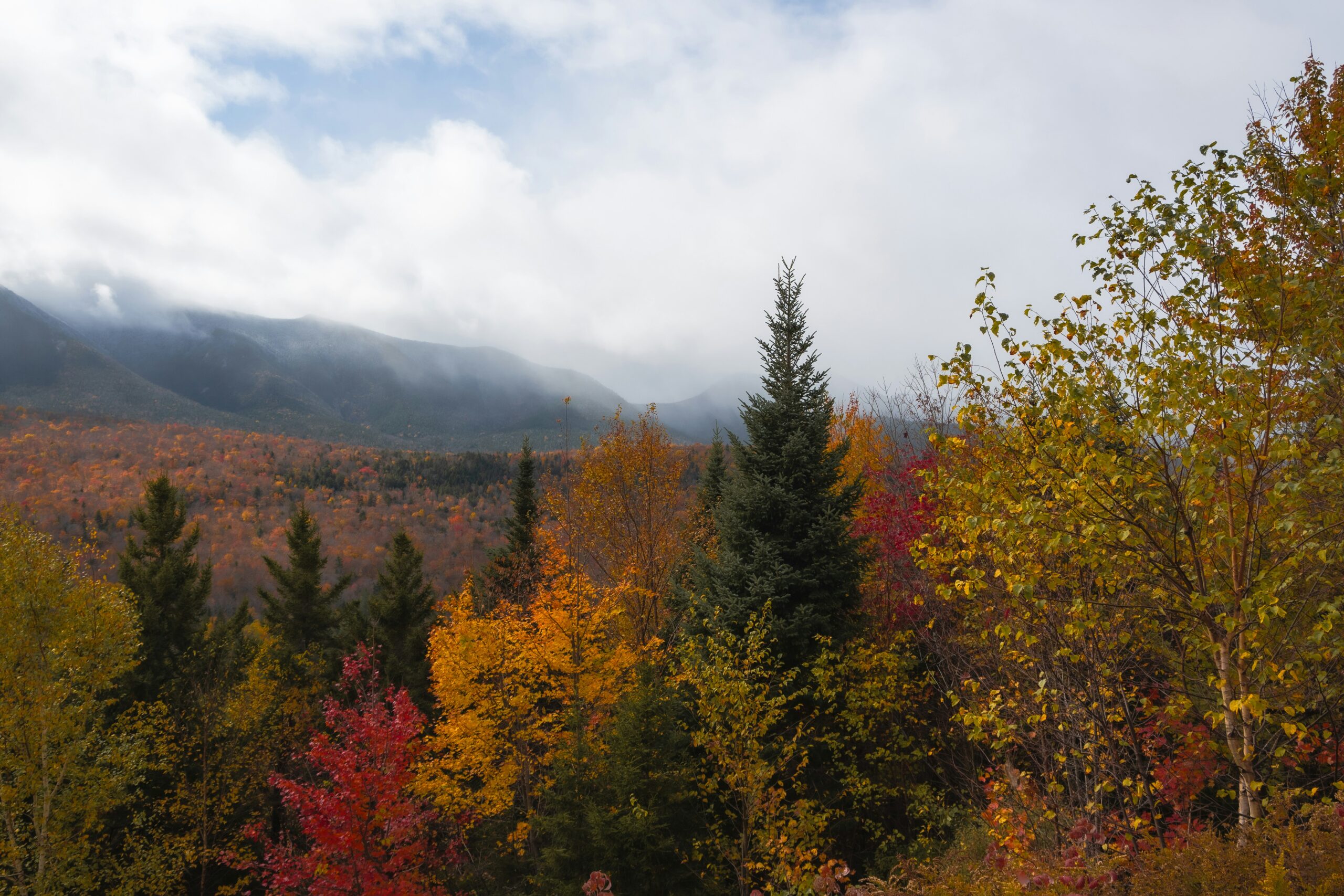
1) Kancamagus Highway, White Mountains, New Hampshire (Route 112)
Why it’s special: “The Kanc” is a 34-mile scenic byway that threads high valleys, rushing rivers, and maple-heavy hillsides. It’s the no-brainer New England classic—worth crawling out of a warm sleeping bag before sunrise for those gold-pink ridgelines.
When to go: Peak typically lands late September through the second week of October in the White Mountains, with color often lingering another week or so. Check local foliage updates as your dates approach. Visit White MountainsNew England Today
Pro tips (getting there / doing / staying):
Drive it east → west from Conway toward Lincoln for morning light along the Swift River and the pull-outs near Sabbaday Falls.
Camp on the byway. Covered Bridge Campground sits right off the Kanc (note the 7’9″ height restriction through the bridge; larger rigs enter from Passaconaway Rd). Jigger Johnson—about midpoint on the Kanc—is the only byway campground with showers. Reservations are available at Covered Bridge via Recreation.gov; others are often first-come, first-served. US Forest ServiceRecreation.govkancamagushighway.com
Stretch the legs: Boulder Loop Trail near Covered Bridge offers big-bang views on a 3-mile loop. US Forest Service
2) Blue Ridge Parkway, Virginia & North Carolina
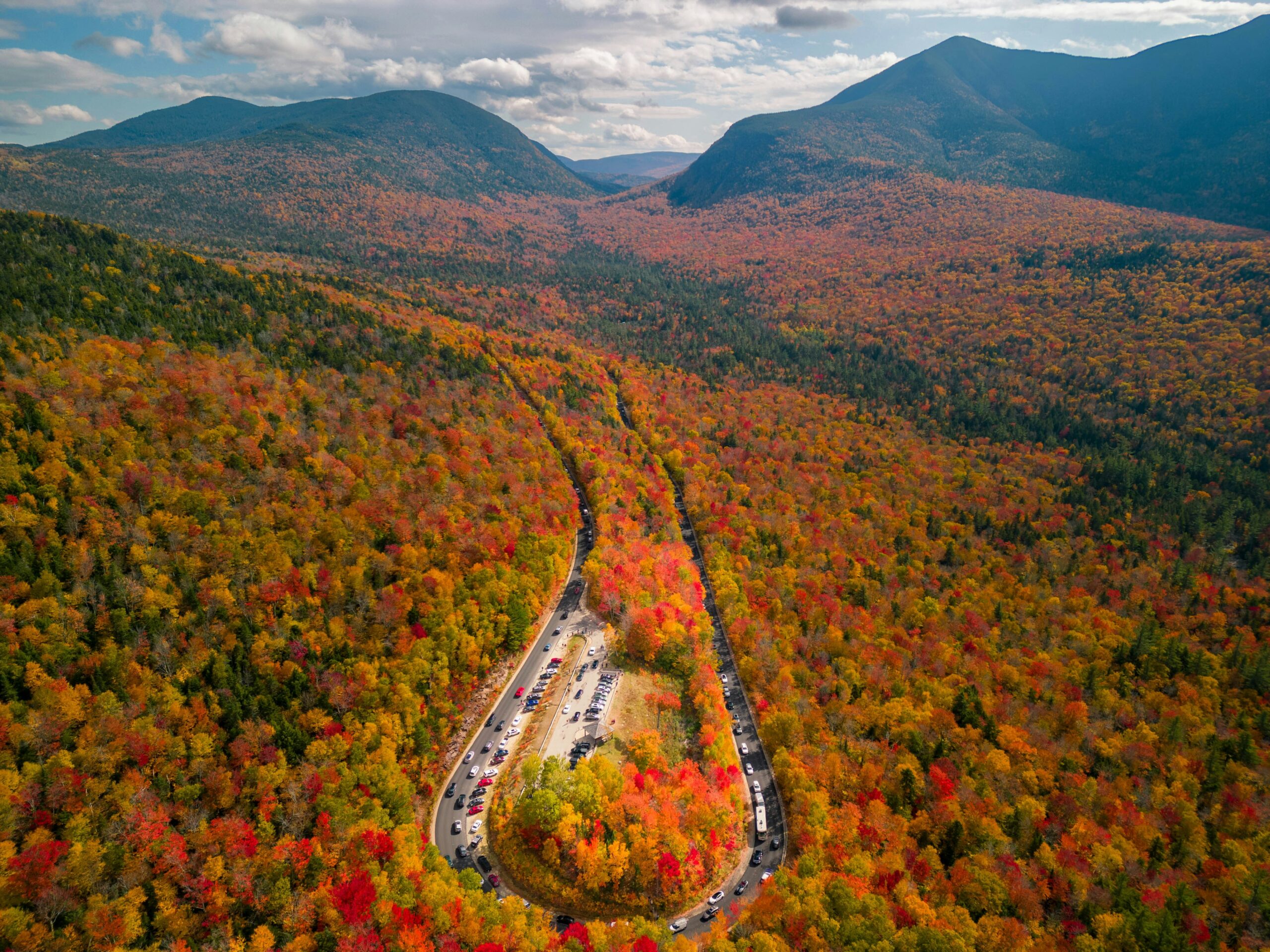
Why it’s special: 469 miles of rolling overlooks, historic farms, high balds, and the Appalachians showing off like it’s their job. Elevation changes here mean a long, staggered color season.
When to go: Timing varies by elevation and latitude—Virginia’s sections tend to peak earlier in October; North Carolina’s high country often peaks mid- to late-October. The National Park Service tracks conditions and explains how weather shifts color. Red Around the WorldNational Park Service
Pro tips (getting there / doing / staying):
Plan a north→south run to “chase” peak as it slides down the range.
Stay every ~40 miles: The Parkway’s network of NPS campgrounds makes a perfect hopscotch route (Peaks of Otter in VA; Julian Price & Linville Falls in NC are favorites). Limited backcountry/ group sites require permits. National Parks TravelerNational Park ServiceBlue Ridge Parkway
Build in buffer days: Weather is moody—misty mornings can become bluebird afternoons in a snap.
For The Hungry Traveler:
Set up a picnic at an overlook with our Happy Hour dips and spreads kit! Dinner back at camp? Texas State Fair Chili hits the smoky-chilly sweet spot.
3) San Juan Skyway, Colorado (Durango ▸ Silverton ▸ Ouray ▸ Telluride loop)
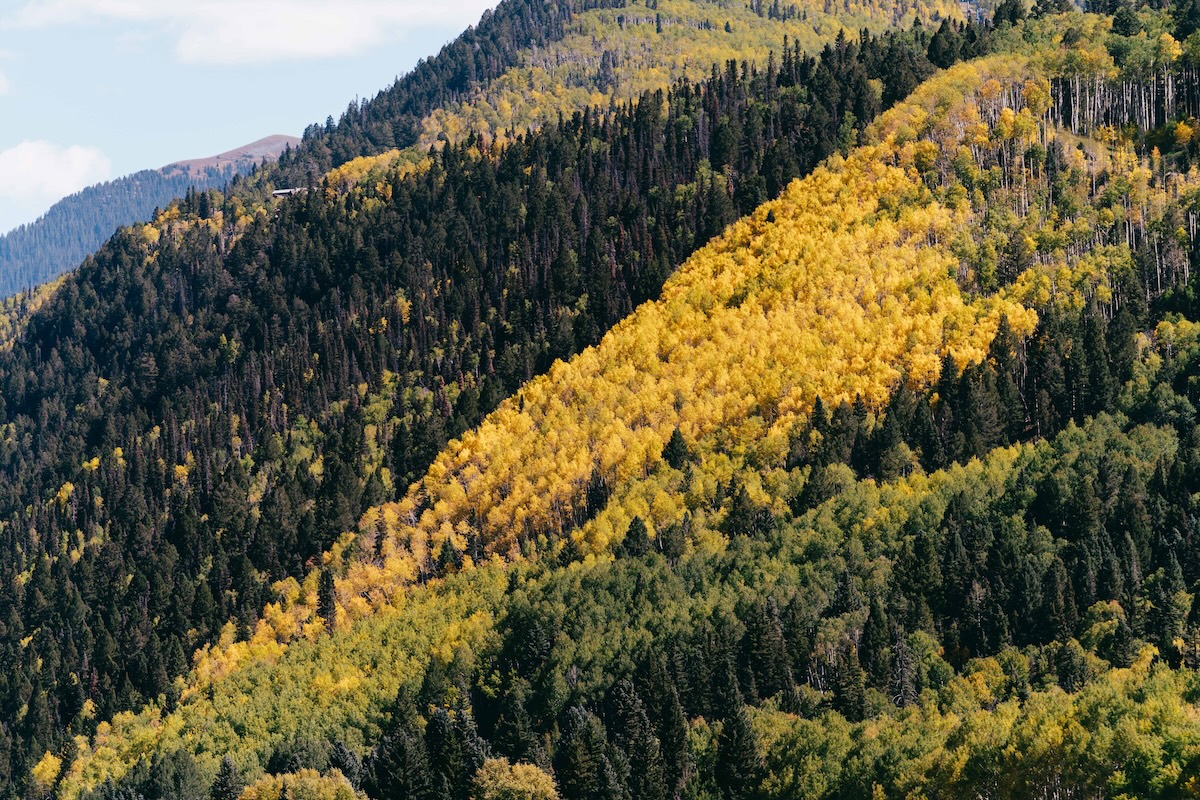
Why it’s special: A 230-ish-mile lariat of high passes and aspen seas. In a good year, the hillsides look like they’ve been painted with liquid gold.
When to go: In the San Juan mountains, color starts mid-September near Silverton and typically runs into early–mid October toward Pagosa Springs, Purgatory, and Dolores. The US Forest Service provides a great Fall Color Report
Pro tips (getting there / doing / staying):
Know your loop: Expect dramatic drop-offs, minimal guardrails, and slow-going in the twisties—allow a full day minimum even if the raw drive time is listed at 6–7 hours. Check CDOT before you roll. Colorado Department of TransportationDurango, CO
Base in a hub town: Durango (family-friendly, rail history), Ouray (hot springs + box canyons), or Telluride (gondola views) all make great overnights. Visitor bureaus have current conditions and maps. Durango, COColorado.com
Photography tip: Arrive before sunrise—aspens glow brightest with low-angle light behind them. Keep a polarizer handy for those cobalt Colorado skies.
4) Porcupine Mountains Wilderness State Park, Michigan Upper-Peninsula
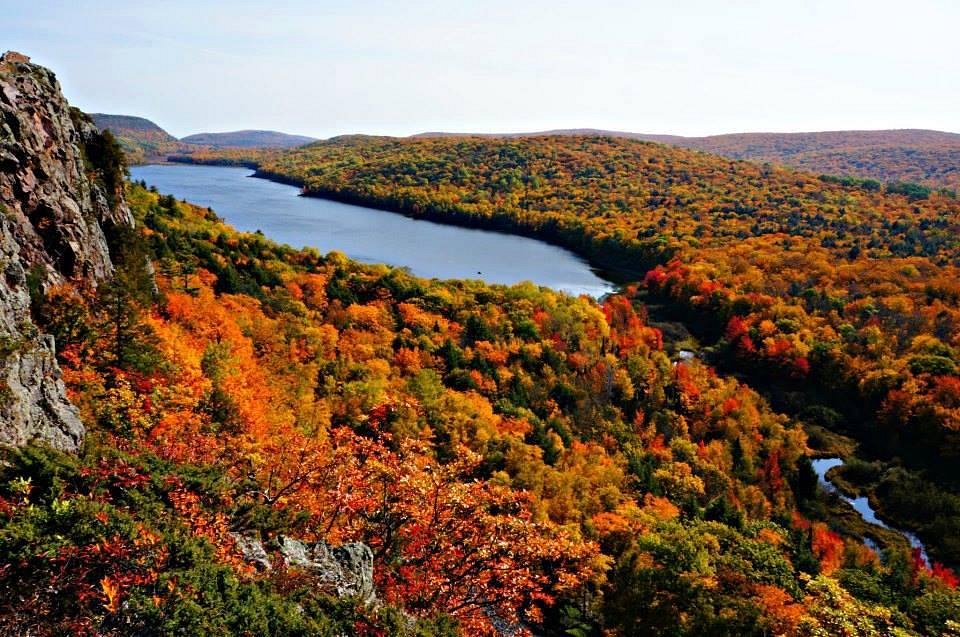
Why it’s special: 60,000 acres of old-growth hardwoods, Lake Superior shoreline, waterfalls, and classic ridge-top vistas (hey there, Lake of the Clouds). It’s the U.P.—so it feels like a proper fall.
When to go: Peak is often late September through the first half of October across the U.P., with color moving west→east and from the interior toward the lakes. 2025 forecasts are pointing to early color in mid-September, with peak in the first week of October.
Pro tips (getting there / doing / staying):
Reserve early: Michigan DNR cabins/lodges and campgrounds in the Porkies book out months ahead (reservations typically open six months in advance). midnrreservations.comMichigan.gov
Do the classics: The Lake of the Clouds overlook and Summit Peak fire tower are non-negotiables; waterfall-hop along the Presque Isle River. Park pages have closures/alerts – Michigan.gov
5) Columbia River Gorge, Oregon & Washington
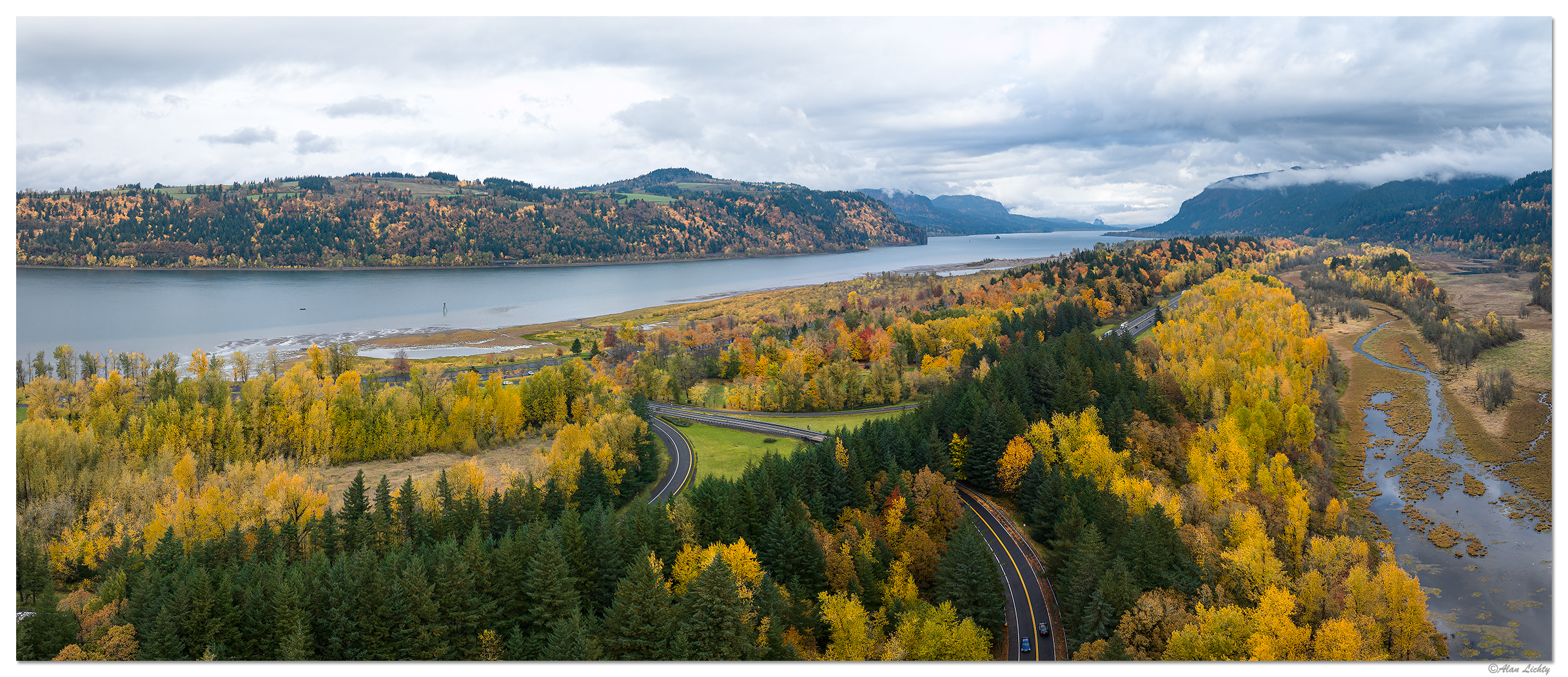
Why it’s special: An 80-mile National Scenic Area of columnar basalt, vineyards, and 90-plus waterfalls where big-leaf maples and cottonwoods set the canyon ablaze—usually later than much of the country, which makes it an excellent “last call” for leaf season. Condé Nast TravelerThe Official Guide to Portland
When to go: Mid-October to early November is a solid window, especially around Multnomah Falls, Latourell Falls, and Hood River’s orchards.
Pro tips (getting there / doing / staying):
Plan permits/parking: Peak season often means timed-entry or parking reservations at Multnomah Falls—check current rules before you head out. Go early and midweek if you can.
Make it a basecamp trip: Stay in Hood River or White Salmon for easy access to waterfalls, e-bike routes, and wine country; Travel Portland’s Gorge guide is a great planner.
Wet-weather ready: This is the PNW—pack a rain shell, dry sacks, and a towel for the car. Trails can be slick with leaf-litter; trekking poles help.
How to Nail the Timing (and avoid the stress)
Watch dynamic foliage maps the week before you go; 2025 trackers and regional reports update in near-real-time. Explore FallAlmanac
Remember elevation & latitude: Higher and farther north = earlier; lower and south = later. The NPS notes that bright days + cool (not freezing) nights yield the best color and longevity. For tracking, follow this link from the National Park Service
Consider 2025 weather: Long-range outlooks suggest a warmer-than-normal fall in many regions, which can shift color windows; the Northeast/Appalachians may skew cooler/drier—a recipe for vivid displays. Build flexibility into your itinerary.
A Simple, Road-Ready Meal Plan
Breakfast
- Polenta with Pork Sausage — Creamy corn polenta with parmesan, herbs, and sausage crumbles; the kind of warm-up that makes crisp mountain mornings easier to leave the sleeping bag for.
- Good Day Sunshine Bowl — Maple oats with mango, coconut, and toasted nuts; a bright start for foggy fall overlooks.
No-Stove Lunches
- Texas Mesquite Chicken Salad — Smoky chicken with veggies and apple in a creamy dressing; perfect trail-gating food between scenic pull-offs.
- Curry Mango Chicken Salad — Curry-spiced chicken with mango, peas, and currants; a colorful match for golden aspen hillsides.
- Trailside Bean & Cheese Burrito — Refried beans & cheese in a quick tortilla wrap; fuel for chasing waterfalls and leaf-lined hikes.
Warm Dinners
- Texas State Fair Chili — Hearty beef chili with a Texas Pete kick; ideal for winding down after long drives under fiery canopies.
- Dottie’s Chicken & Dumplings — Classic comfort with dumplings and veggies; a cozy way to cap off chilly ridge-top evenings.
- The “Big Easy” Cajun Gumbo — Chicken, rice, okra, and Cajun trinity; a bold dinner for nights when autumn air has extra bite.
Sweet Finish
- Mom’s Banana Puddin’ — Bananas in vanilla custard with cake croutons & coconut; a nostalgic dessert to savor under starlit, leaf-strewn skies.
Sips
- Moonshine Margarita — Trail-ready marg mix, single or carafe; raise a toast to golden-hour light washing over the fall landscape.
Leaf season is fleeting—plan smart, pack light, and keep your eyes on the sky (and the road). Wherever you end up—New England notches, Appalachian overlooks, Rocky Mountain passes, Great Lakes ridges, or PNW waterfall canyons—there’s a good chance your favorite fall view is the one you eat dinner in front of.
Safe travels & happy peeping! 🍂🚗🧭
